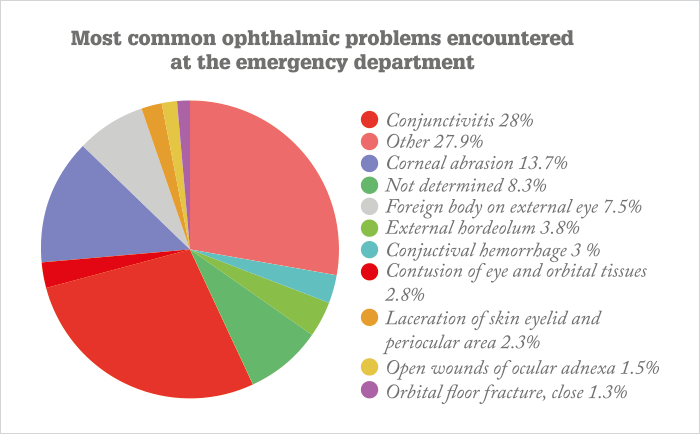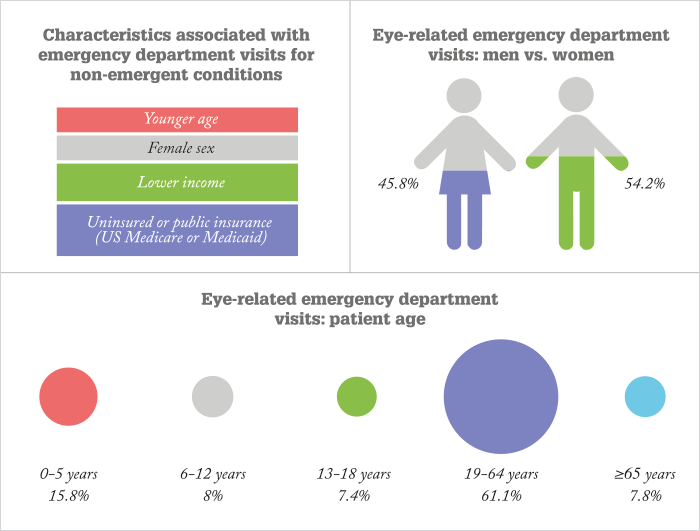
What does it take for a patient to present to their local hospital’s emergency department with an eye injury? The answer is worth knowing – an understanding of the epidemiology of eye-related emergency department visits allows policymakers to make the most appropriate allocation of resources based on some solid evidence.
The US Nationwide Emergency Department Sample holds records on 11.9 million emergency department visits across the nation, including eye-related visits, and interrogating the data over a period spanning from 2006 to 2011 has yielded some
useful information.

It turns out that 44.3 percent of all eye-related visits were for conditions unlikely to require urgent care – such as conjunctivitis or external hordeolum, and if people did present with these non-emergent conditions, they tended to be from lower income groups, and have either public insurance (Medicare/Medicaid) or none at all – precisely the patients who are less likely to have access to a primary care physician (something that’s associated with fewer non-emergent visits), and are more likely to visit the emergency department for non-urgent health issues in general (1). The solution? Improving access to eyecare professionals, and information outreach. Making sure patients are aware of specialized urgent care centers where they exist (and directing them there) should cut costs – it’s estimated that visiting the emergency department for an issue that could have been treated elsewhere costs as much as two to three times more (2). And since many locations in the US (and many other countries too), won’t necessarily have an ophthalmologist or other trained eyecare professional to hand in the emergency department, it could result in improved care for patients.
References
- R Channa et al., “Epidemiology of eye-related emergency department visits”, JAMA Ophthalmol, [Epub ahead of print], (2016). PMID: 26821577. LC Baker, LS Baker, “Excess cost of emergency department visits for nonurgent care”, Health Aff, 13, 162–171 (1994). PMID: 7868020.
